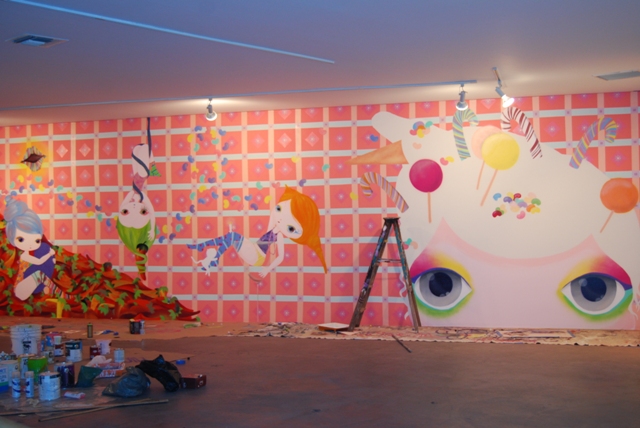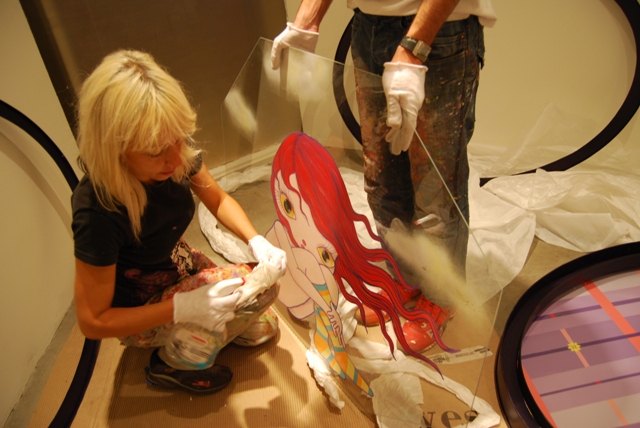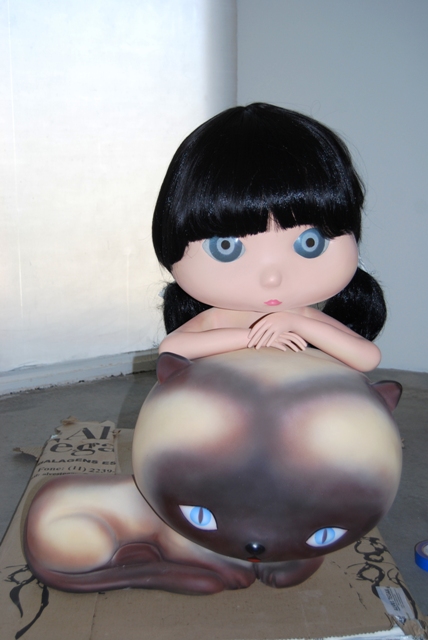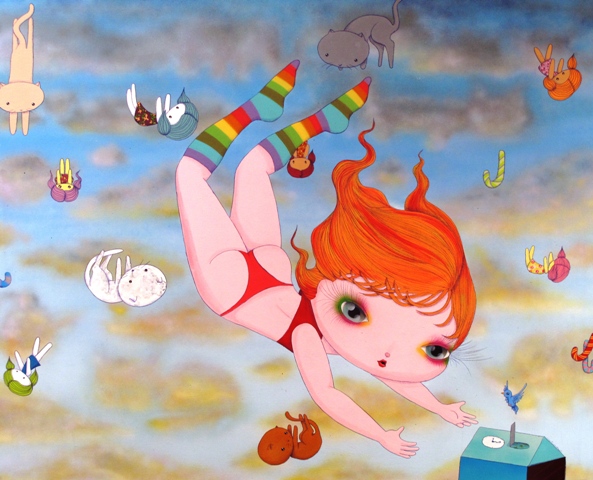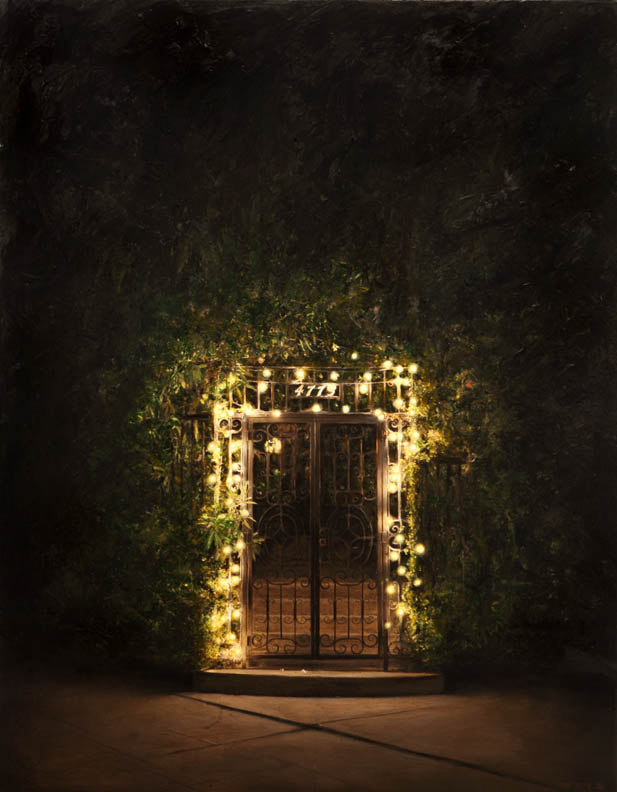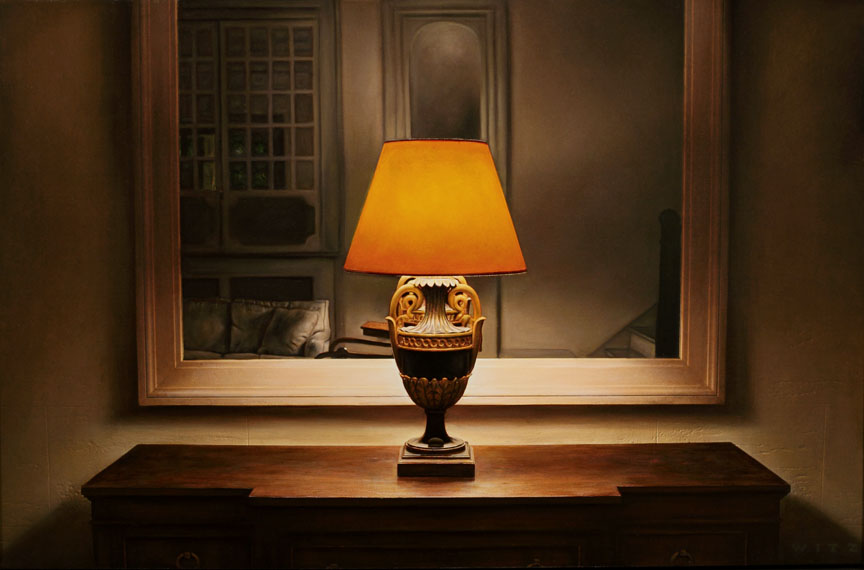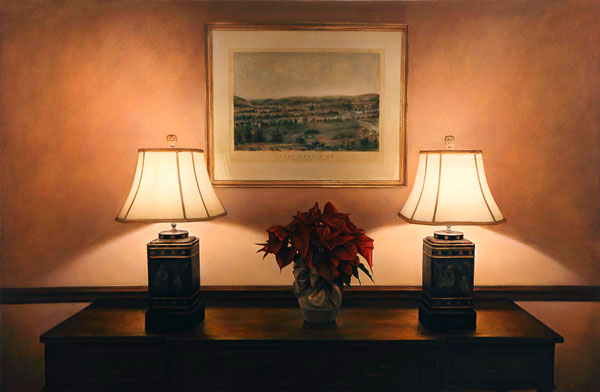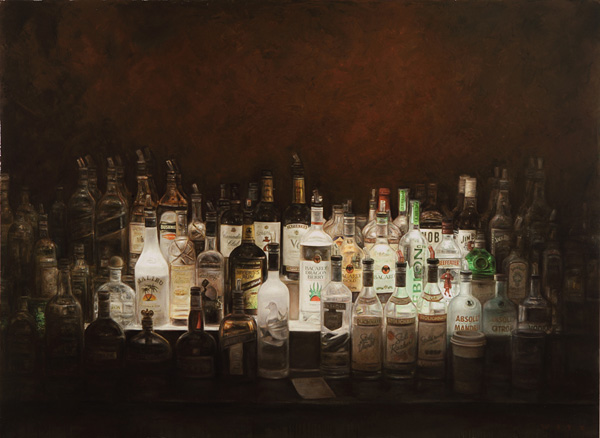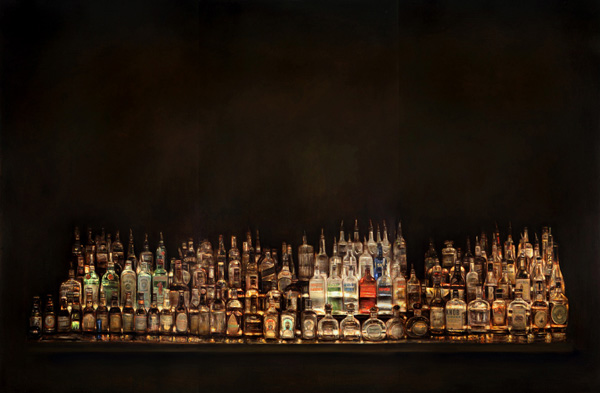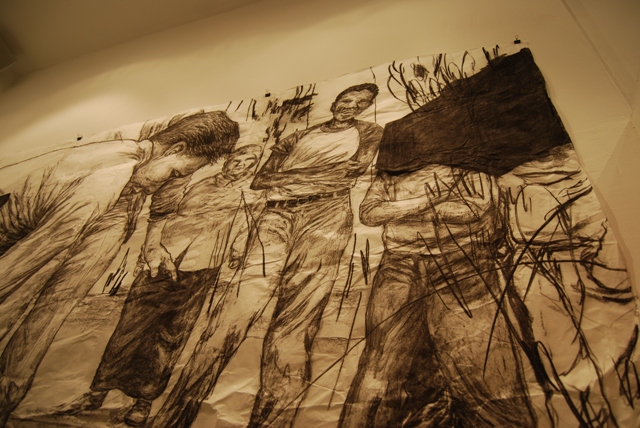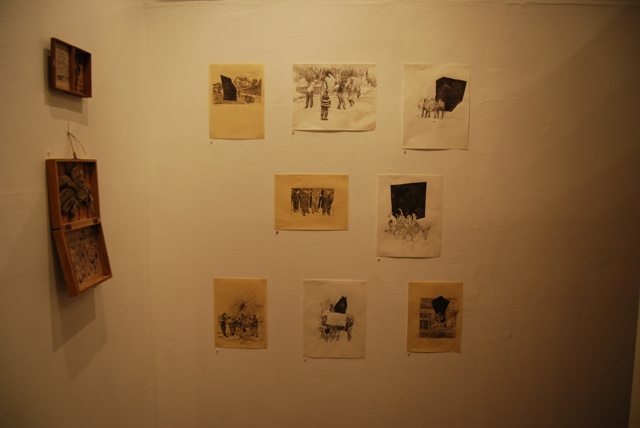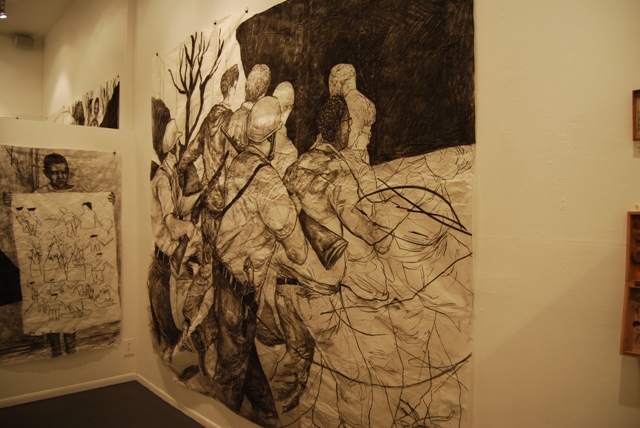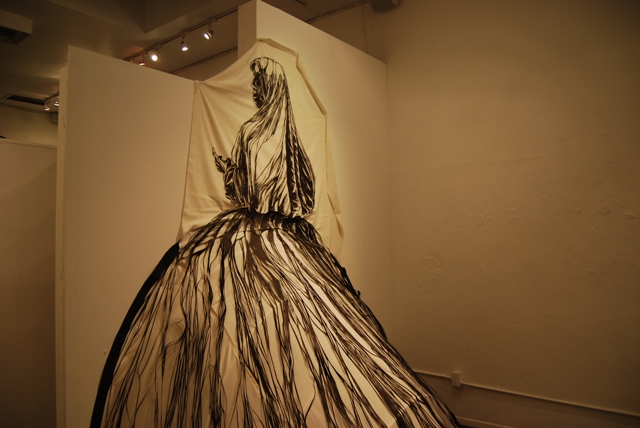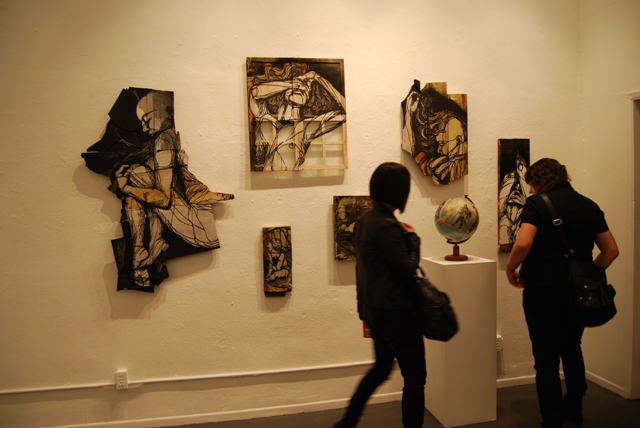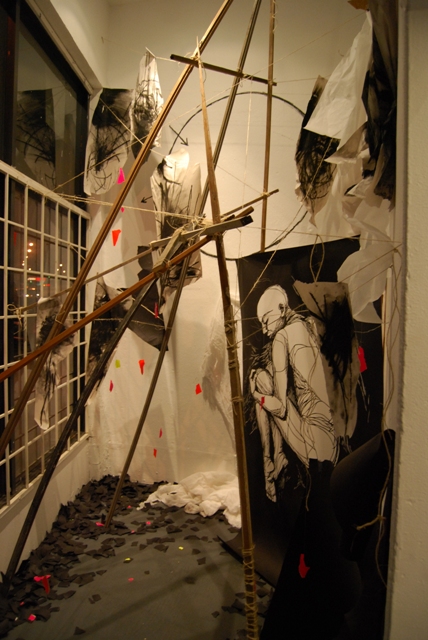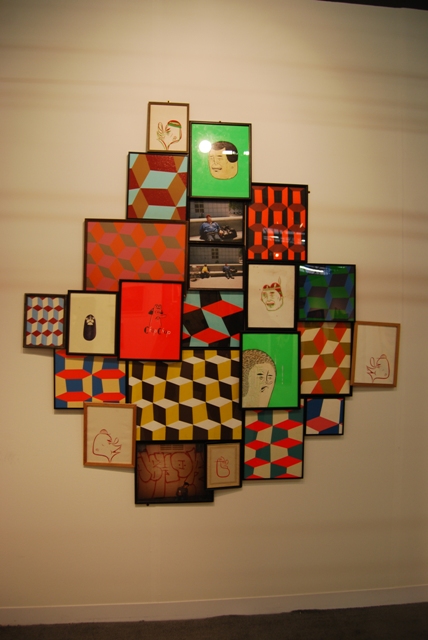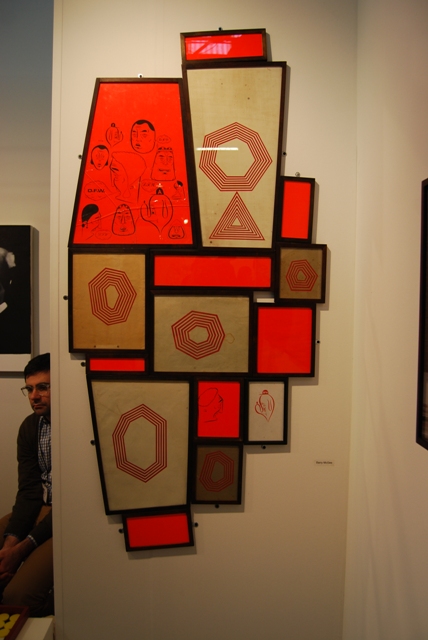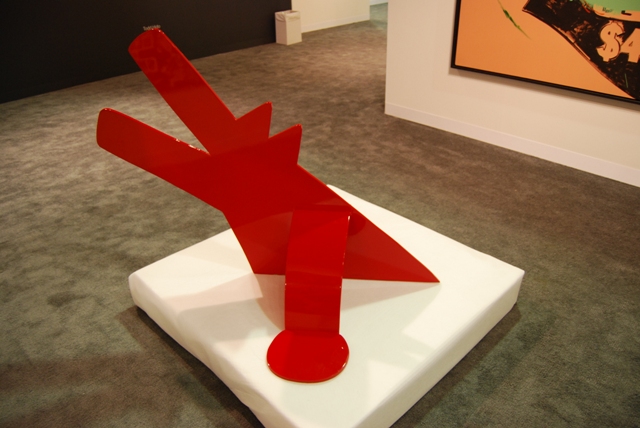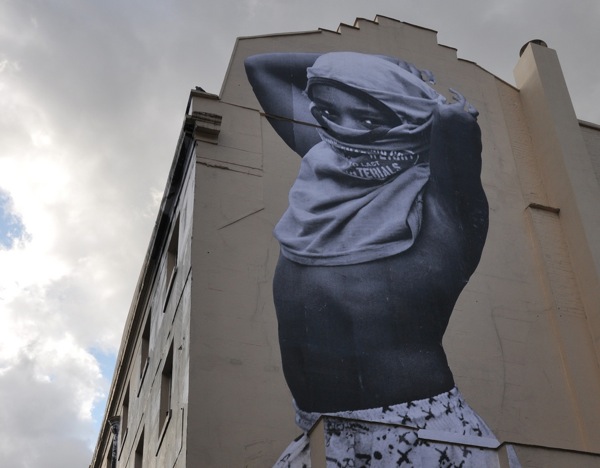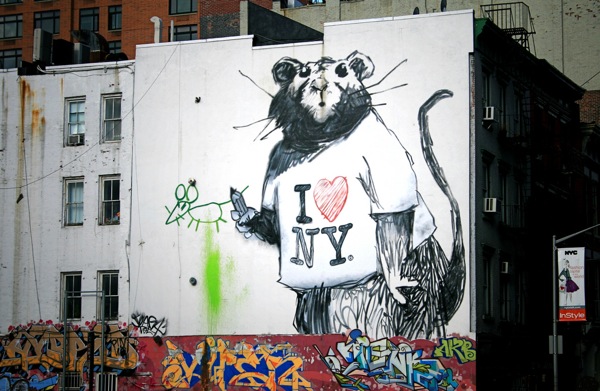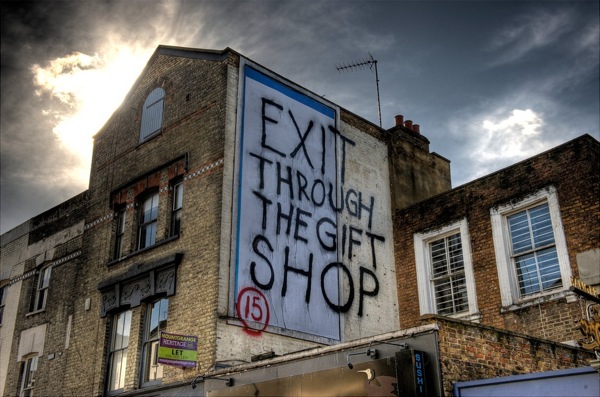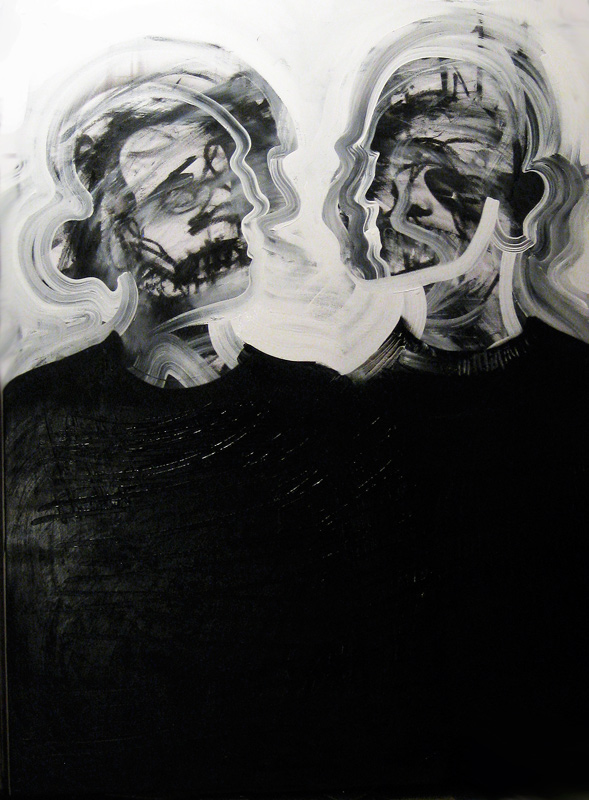I’ve loved Nina Pandolfo‘s work ever since Seth and I showed it in our first show here in LA in 2006. Having her as the first artist to exhibit in the new Carmichael Gallery makes the experience of settling into Culver City even more special for me and the work she’s made for the show is her best ever, in my opinion. It’s always so good to see artists you respect push themselves to more innovative usage of media and develop deeper thematic layers within their imagery. Nina’s mural along the main wall of the gallery builds upon the piece she painted for Deitch Projects x Goldman Properties’ Wynwood Walls in Miami (pics here and here) with her husband and brother-in-law osgêmeos and friend Finok, while the piece in the progress shot below is a multi-layered combination of acrylic on linen and glass with metal, light and artificial flowers. “Mixed Media” doesn’t really describe the end result, which is simply incredible; I’ve never seen anything like it before!
Nina has made another of these pieces that, in place of flowers, incorporates little beads that look like candies, plus a piece made entirely from Swarovski crystals, a series of large canvases and three hand-made fiberglass sculptures that are perhaps my favorite works in the show. Here’s a progress shot of one, hanging out with her kitty while her friends were in hair and makeup (if she were a real girl, she’d probably kill me for posting this).
Below is one of Nina’s canvases. Before I post it, I’d like to talk briefly about the connection between Nina and osgêmeos. It’s something a lot of people understandably wonder about, seeing as they’re family and have painted all over the world together for so many years. From my perspective, as a fan of both, it’s the simple magic that exists in their work that draws us in. All three possess an innate ability to transport us to a place that, whilst drawing upon the life we live, is much happier, brighter and devoid of the pressures that so often weigh us down. This place is one we can escape to and immerse ourselves in simply by gazing at their pieces, then come away with a more tranquil understanding of why things are the way they are.
The three Pandolfos are intelligent without affectation, kind without condescension, and positive without pretending that there aren’t things wrong with the world. I think that’s why people are so floored by shows like Vertigem (osgêmeos’ touring exhibit), Too Far Too Close (their 2008 Deitch show), the castle they and Nina painted in Kelburn with Nunca, the Wynwood Walls mural, and what I hope they’ll see in Nina’s show here – these artists touch a very tender nerve in us.
This, for me, is the connection between the Pandolfos, and yet at the same time, I feel their work couldn’t be more different. Nina’s characters and landscape have a very different flavor (that’s actually the title of the show, Life’s Flavor). When I look at what she does, what I admire most is her sophisticated melange of surrealist motifs, craftmanship that is as polished as the best in the Asian contemporary movement, and her passionate acknowledgement of Brazil’s colorful street scene.
Then there are the trademark children who populate her work. Unlike the frankly disgusting amount of work in the world that employs imagery of pretty girls to appeal to the viewer’s erotic fantasies (it’s obviously not hard to understand why this work is popular, but (and I’m no feminist) I simply think it’s wrong and I struggle to respect it), Nina’s presentation of youth and the female form could hardly be more different. Her preoccupation is with the return to innocence, to the core of our natural, dreamlike state. Close to bursting with exuberance, her young figures and their world capture a lightness that exists in all of us, even if we can’t always reach it.
Anyway, if you live in LA or will be in town this weekend, come say hello to us all and see Nina’s work in person at Carmichael Gallery, 5795 Washington Blvd, Culver City.
– Elisa

